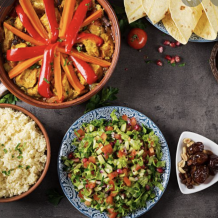
One of Morocco’s economic strengths is that it can meet its own food supply and demand needs. As the majority of the world faces issues and disruptions with its supply chain, Morocco’s long term dedication to its domestic production means that the country’s population of nearly 37 million is still able to enjoy an abundance of fresh produce at nearly undisrupted prices. Morocco’s Agriculture of Ministry recently said that as of Mid April 2020, the domestic market and export of fruits and vegetables is up 3% to 876,0000 tons.
The growth engine behind this success is the Morocco Green Plan. The agricultural strategy launched in 2008 with the intention of supporting Morocco’s national economy in terms of job creation, exports, poverty, mitigation, and developing pluralistic agriculture open to foreign markets that are local and sustainable.
Recently, the kingdom announced a new branch of the Green Morocco Plan entitled Generation Green 2020-2030 with the aims of creating 350,000 jobs and boosting exports. At the moment, Morocco’s agriculture sector, with the support of the Green Plan, accounts for 14% of the country’s GDP and employs around 4 million people living in the country’s Atlas mountain foothills, Berber villages, and other rural areas.
Morocco’s exports include fresh vegetables and fruits and canned items. It also sources its own resources for items like red meats, poultry, sugar, table oil, and milk.





